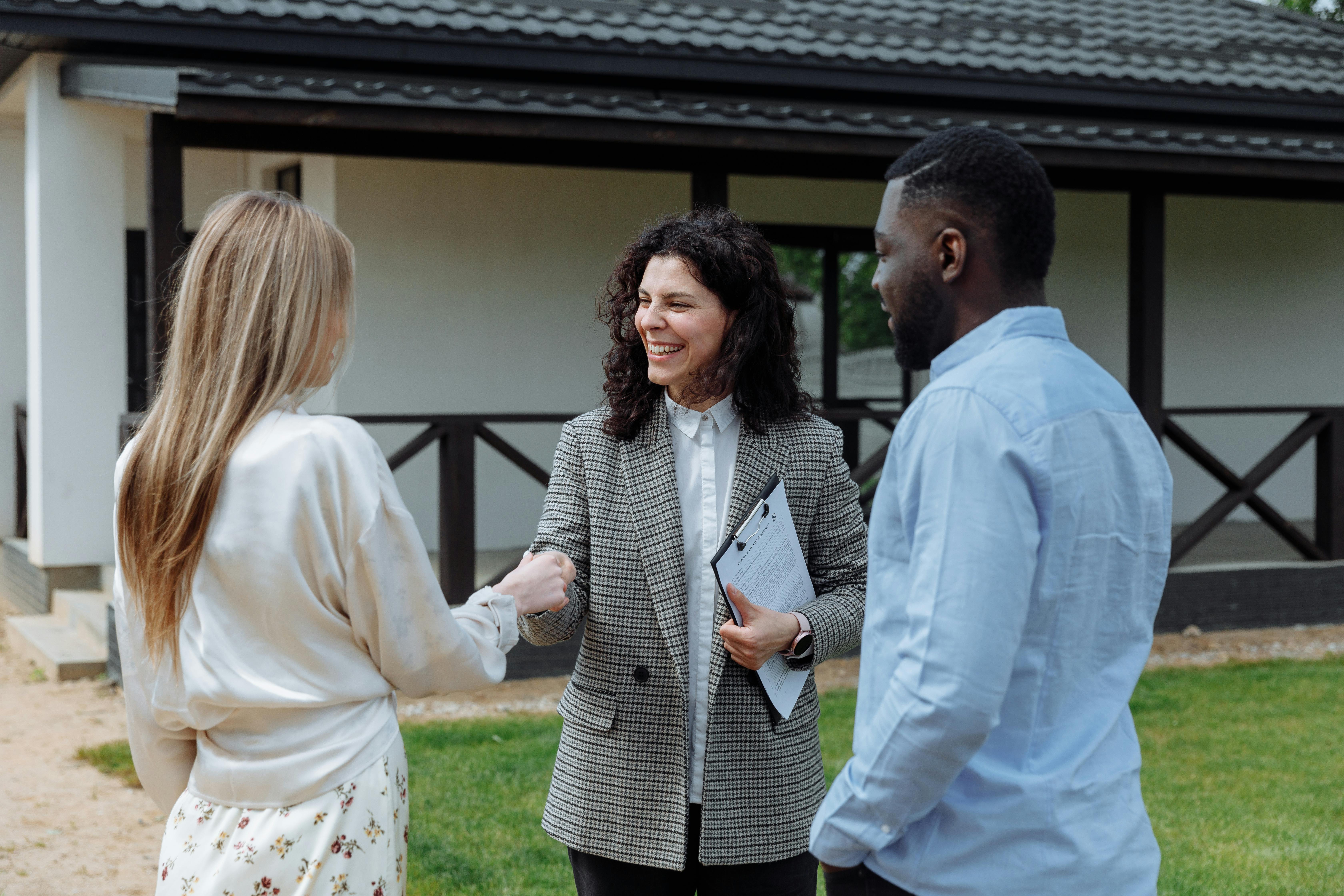March 3, 2025
Is Shared Ownership Worth It? Pros and Cons Explained
Getting on the property ladder can feel like a daunting task, especially with rising house prices, which makes homeownership seem out of reach for many. That’s where shared ownership comes in, a scheme designed to make buying your first home more affordable and manageable.
By purchasing a share of a property and paying rent on the rest, you can take that first step towards owning a home without the hefty upfront costs. It sounds like a great opportunity, doesn’t it? But, like anything, shared ownership has its ups and downs. Let’s break it all down together.
What Is Shared Ownership?
Shared ownership is a government-backed scheme designed to make homeownership more affordable, especially for first-time buyers. Instead of purchasing a home outright, you buy a share, typically between 25% and 75%, and pay rent on the remaining portion owned by a housing association.
This lowers upfront costs since your deposit is based only on the share you buy, usually 5% to 10% of that amount. For example, if a home costs £200,000 and you buy a 50% share, you'd need a deposit of £100,000. Your monthly payments would then include both mortgage repayments and rent on the unsold portion.
Shared ownership also offers flexibility through staircasing, allowing you to buy additional shares over time. As you increase your ownership, your rent decreases, and once you own 100% of the property, you’ll no longer pay rent - only mortgage repayments.
This scheme is a stepping stone for those with stable or growing incomes, helping buyers gradually transition to full homeownership. However, it's essential to factor in additional costs like rent on the unsold share and service charges.
Consulting a mortgage broker, such as those available through Mortgage Connector, can help you assess whether shared ownership is the right fit for your financial situation.
Benefits Of Shared Ownership
Shared ownership provides an accessible path to homeownership, particularly for first-time buyers facing affordability challenges. It bridges the gap between renting and full ownership with manageable steps.
Affordability

Shared ownership makes homeownership more achievable, as you purchase a share of the property instead of the full market value. Buying a share of 25% to 75% keeps costs lower compared to buying outright, which is especially helpful in areas with high property prices. For example, if the full market price of a home is £200,000, buying a 25% share would mean paying just £50,000 upfront, reducing financial strain.
Lower Initial Deposit
Deposits for shared ownership are significantly smaller than traditional mortgages. A 5% to 10% deposit is only calculated on the share you're buying, not the property's total value. Using the earlier example, a 5% deposit on a £50,000 share is just £2,500. This lower upfront cost helps you move into your own home faster, even with modest savings.
Opportunity To Increase Ownership
Shared ownership gives you the flexibility to purchase additional shares over time, known as staircasing. You can increase your stake at your own pace, depending on your financial situation.
For instance, if your income grows, you could purchase a larger share, like an additional 25%, or even reach 100% ownership. Owning the property outright eliminates rent payments, leaving only the mortgage. It's worth noting that shares are valued at the market rate at the time of purchase, not the original price.
Maintenance And Repairs
Unlike renting, shared ownership places maintenance and repair responsibilities on you as the homeowner. However, these costs tend to be more predictable compared to private renting, where landlords control upkeep.
This gives you greater control and ensures your property retains its value. Bear in mind that some properties may include service charges, often for communal areas, so it’s good practice to set aside a budget for such fees.
Drawbacks Of Shared Ownership
While shared ownership offers a more accessible route onto the property ladder, it’s important to consider some potential drawbacks that may impact your experience.
Restrictions On Modifications
With shared ownership, modifying your property isn't as straightforward as full ownership. Permission is typically required from the housing association to make structural changes or significant improvements.
For instance, adding an extension or altering internal layouts may not be allowed unless explicitly approved. This can limit your ability to personalise your home, especially if you envision making substantial updates.
If you plan on making any modifications, first check your lease agreement to understand what’s permitted. For major changes, discussing your intentions early with the housing association can help manage expectations and avoid unnecessary costs.
Difficulty In Selling

Selling a shared ownership property can be more complex than selling a fully owned property. Housing associations often have the first right to market the property (known as a resale nomination period) before you can put it on the open market.
Additionally, prospective buyers must meet eligibility criteria for the shared ownership scheme, which can narrow your pool of potential purchasers.
Additional Costs And Fees
Beyond rent and mortgage payments, shared ownership properties often come with added costs. Service charges, ground rent, and administrative fees can significantly impact your monthly budget.
Depending on the property, repairing and maintaining shared areas like hallways or gardens could sometimes result in unexpected expenses. Administrative charges may also apply if you decide to staircase (increase your ownership share) or sell.
Remember to budget for these additional costs when selecting a home. Reviewing the details of service charges and understanding potential maintenance obligations can prevent financial surprises.
Limited Sense Of Ownership
Owning only a percentage of your property can feel less fulfilling for some, as you still pay rent on the unaffordable portion. This dual payment structure, a mortgage alongside rent, can make it seem like you’re only partially investing in your home. Furthermore, restrictions on subletting or significant changes may enhance this perception of limited control.
Consider shared ownership if you value affordability over complete autonomy, at least in the short term. Over time, staircasing allows you to increase your ownership share, moving closer to full control of your property. Planning for this gradual increase in ownership can make the process feel more rewarding.
Who Is Shared Ownership Suitable For?
Shared ownership is ideal for individuals looking to step onto the property ladder without committing to the full market value of a home. It's designed to offer financial flexibility and easier access to homeownership. Exploring its suitability for different groups can help you determine if it's the right fit for your needs.
First-Time Buyers
First-time buyers often face high property prices and difficulty saving for a large deposit. Shared ownership allows you to purchase an initial share of a property, typically between 25% and 75%, with a smaller deposit.
For instance, a 10% deposit on a 25% share of a £200,000 home would amount to just £5,000. This option makes homeownership more accessible while reducing the upfront financial burden.
It also offers an entry point into the property market with the option to "staircase" your ownership over time. If you’re unsure about affordability or hesitant to commit to a traditional mortgage, a shared ownership arrangement provides a pathway to stability.
A good UK mortgage broker, such as the ones found through Mortgage Connector, can assist in securing suitable financing tailored to your circumstances.
Those With Limited Budget
If you're on a tighter budget, shared ownership can offer a structured way to manage monthly payments. By only mortgaging the share you own and renting the remainder from a housing association, your financial obligations initially remain lower than with traditional homeownership.
As a shared owner, your rent adjusts to the portion of the property you don't own. If your circumstances improve and you decide to purchase additional shares, your rental costs decrease proportionally.
This flexibility provides peace of mind and aligns with long-term financial planning. Additionally, saving for a smaller deposit means you can achieve your goal of homeownership faster compared to saving for a larger sum.
Conclusion
Shared ownership offers a unique pathway to homeownership, especially if you're navigating the challenges of rising property prices. While it provides affordability and flexibility, it's essential to weigh the benefits against potential limitations like additional costs and restrictions.
Understanding your financial situation and long-term goals is key to deciding if shared ownership aligns with your needs. By seeking tailored advice and thoroughly researching your options, you can make an informed choice about whether this scheme is the right step towards owning your home.
Frequently Asked Questions
How does staircasing work in shared ownership?
Staircasing refers to the process of gradually purchasing more shares of your shared ownership property. Over time, you can buy additional shares up to 100%, allowing you to own the property outright and eliminate rental payments.
Who is eligible for a shared ownership scheme?
Shared ownership schemes are typically available to first-time buyers, those with household incomes under £80,000 (£90,000 in London), or individuals unable to afford a full property on the open market. Specific eligibility criteria may vary.
Do I need a large deposit for shared ownership?
No, shared ownership deposits are lower than for traditional property purchases. You only need a deposit for the share you’re buying, which is typically 5% to 10% of the share’s value, making it more affordable.
Can I sell a shared ownership property?
Yes, you can sell a shared ownership property, but it can be a bit more complex. Housing associations often have the first right to market the property, and the new buyer must meet the scheme’s eligibility criteria.
Do I pay rent and mortgage with shared ownership?
Yes, you pay a mortgage on the share you own and rent on the portion retained by the housing association. However, staircasing allows you to own more shares and reduce your rent over time.
Can I make changes to a shared ownership property?
You can make changes to a shared ownership property, but structural or significant modifications typically require approval from the housing association, as they co-own the property with you.
Similar articles

April 16, 2025
Established fact that a reader will be distracted by the way readable content.

April 4, 2025
Established fact that a reader will be distracted by the way readable content.

April 3, 2025
Established fact that a reader will be distracted by the way readable content.


